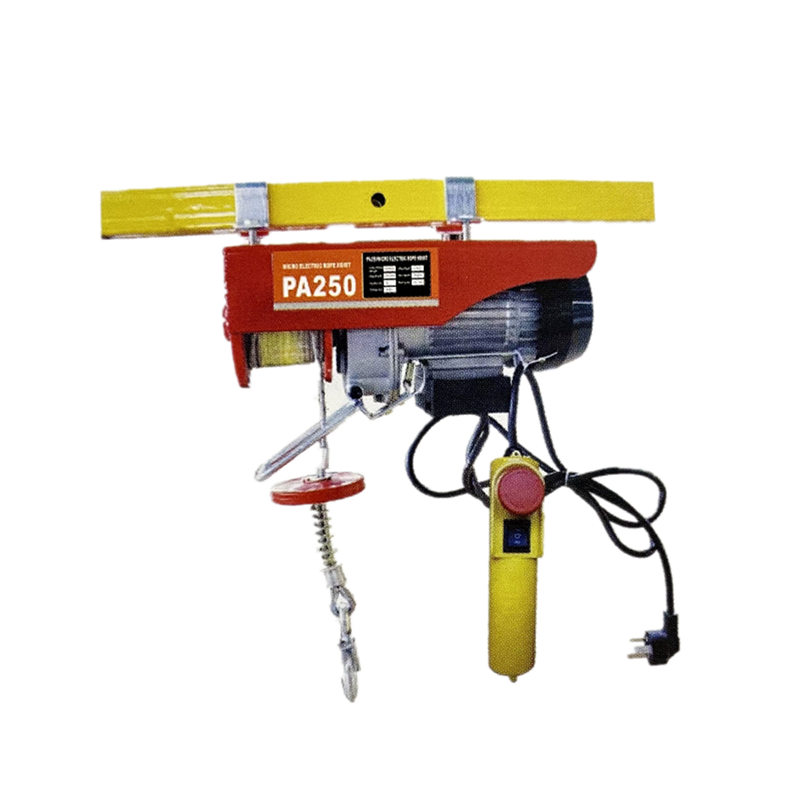


Understanding Chain Pulley Blocks A Complete Guide
Chain pulley blocks, also known simply as chain blocks, are invaluable tools in the world of lifting and material handling. They are widely used in various industries, including construction, manufacturing, and shipping. This article will explore what chain pulley blocks are, how they work, their applications, and the benefits they offer.
What is a Chain Pulley Block?
A chain pulley block consists of a chain and a block with a wheel that allows the chain to turn smoothly. The block is typically mounted on a sturdy frame, which is attached to a fixed point, such as a beam or a ceiling. When pulling on one end of the chain, the chain runs over the wheel and enables the user to lift heavy loads with minimal effort. The mechanical advantage gained from the pulley system allows workers to lift weights that would otherwise be impossible to move by hand.
How Does a Chain Pulley Block Work?
The operation of a chain pulley block is based on the principles of physics, specifically Newton’s laws of motion. When you pull down on the chain, the force is distributed across the pulleys, reducing the amount of force required to lift a load. Essentially, the pulley block allows the user to lift heavier loads than they could with just their own strength.
Chain pulley blocks work on the basis of mechanical advantage. They can multiply the force applied by the user, allowing them to lift significant weights with relative ease. For example, if a chain pulley block has a pulley system that allows for a 41 mechanical advantage, this means that to lift 400 kg, the user would only need to exert the effort equivalent to lifting 100 kg.
Applications of Chain Pulley Blocks
The versatility of chain pulley blocks means they can be used in a variety of applications
1. Construction Sites In the construction industry, chain pulley blocks are commonly used to lift heavy materials such as steel beams, concrete blocks, and equipment. They improve efficiency and safety by enabling workers to move heavy items with less physical exertion.

2. Manufacturing In factories, chain pulley blocks help in assembly lines for lifting parts or machinery. Their ability to provide controlled lifting makes them ideal for intricate manufacturing processes.
3. Maintenance and Repairs Technicians and workers often use chain pulley blocks to lift machinery and vehicles for maintenance. This ensures that mechanics have easy access to components that need repairs.
4. Shipbuilding and Logistics In shipping yards, chain pulley blocks are utilized to load and unload cargo from ships. Their reliability and ease of use make them essential tools in logistics operations.
Benefits of Using Chain Pulley Blocks
There are several advantages to using chain pulley blocks in various applications
- Increased Efficiency By utilizing a chain pulley block, workers can lift heavier objects faster and with less effort, increasing overall productivity on job sites. - Enhanced Safety Lifting heavy loads manually can lead to injuries. Chain pulley blocks reduce the risk of strains and injuries by allowing for the mechanical lifting of heavy weights.
- Durability and Reliability Most chain pulley blocks are made from high-quality materials designed to withstand heavy loads and continuous use. This durability ensures longevity and reliability in demanding environments.
- Cost-Effectiveness Investing in a chain pulley block can save money in the long term by reducing labor costs and minimizing the risk of workplace injuries.
Conclusion
Chain pulley blocks are essential tools that provide significant benefits in a variety of settings, from construction sites to manufacturing plants. Understanding how these tools work, their applications, and their benefits can help industries improve efficiency and safety in lifting operations. Whether you are a contractor, factory manager, or maintenance technician, incorporating chain pulley blocks into your workflow can make a substantial difference to your operations. With their mechanical advantage and reliability, they are an indispensable part of modern material handling.



